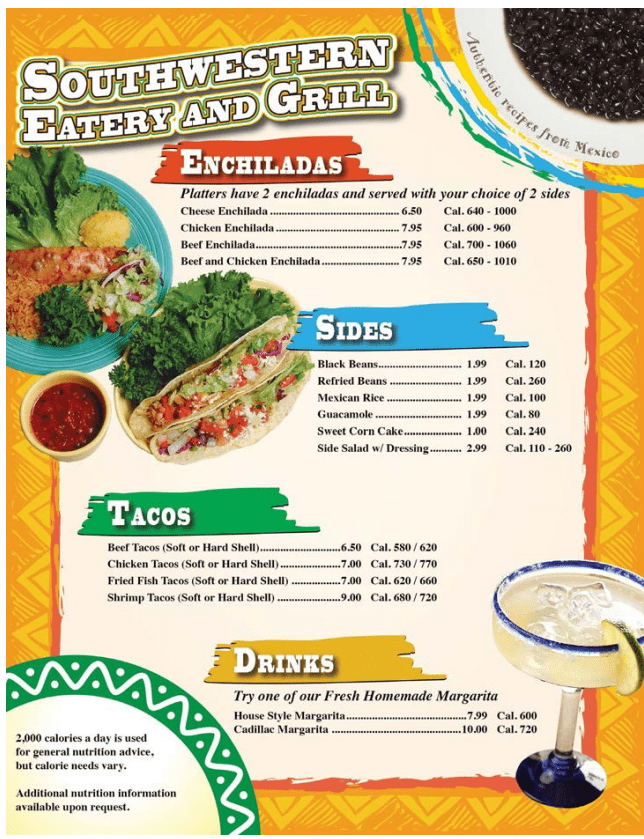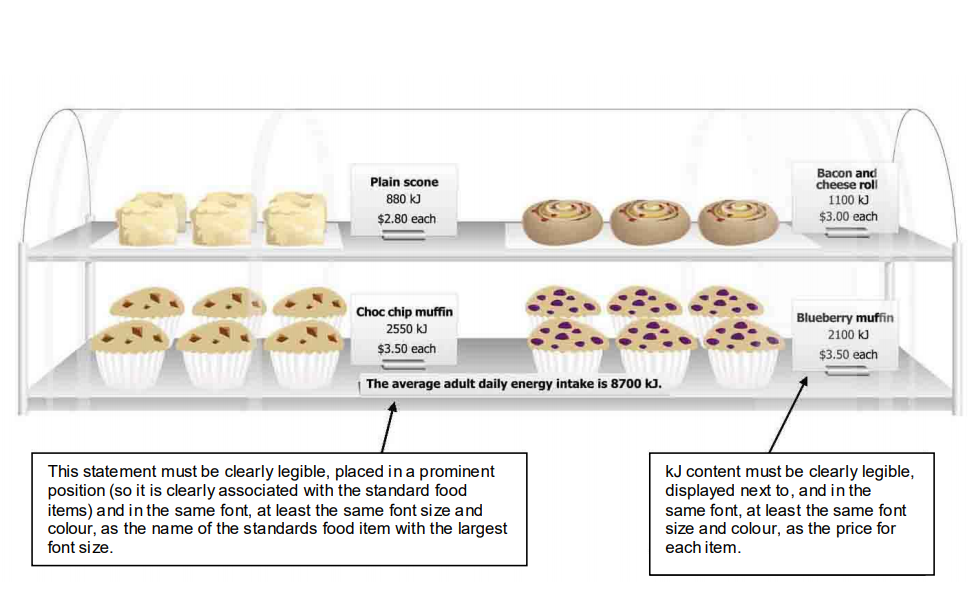International Laws on Nutrition Labelling for Food Service Establishments
August 24, 2022

With a realization for a need in policy change to tackle lifestyle diseases like obesity, many countries have introduced menu calorie labelling. These mandatory and voluntary laws are meant for restaurants, food service establishments and others in similar business. As the number of people eating out and ordering food from restaurants have increased the need for such policies was inevitable. India has been in full agreement to this idea, which is evident in its recent Labelling and Display guidelines of 2020. The guidelines are derived from the 9th Amendment to the Food Safety and Standards (Packaging and Labelling) Regulations, 2011, which was released on August 21, 2020, with the aim of providing consumers with complete nutritional information about their food. The FSSAI recognizes that menu labeling is a fresh concept in Indian restaurants and the hotel and restaurant industry is still recuperating from the COVID-19 pandemic, so it may take time for Food Business Operators (FBOs) to adapt to and embrace the new system. To know more on this, read article- FSSAI makes Menu Labeling Mandatory for Restaurants (sigmatest.org)
International laws for restaurants
Some of the International laws on nutrition labelling for restaurants are detailed here
1. U.S FDA (Food and Drug Administration)
Internationally, the US FDA has been at the forefront with mandatory declarations for restaurants. As early as 2014, the Final Rule for nutrition labelling in chain restaurants and similar retail food establishments was declared. According to this Rule, the following are the establishments covered.
Restaurants both quick service and sit-downs
Grocery, convenience stores, Superstores
Food takeaways and delivery services
Entertainment venues
Cafeterias and coffee shops
Other Foodservice Operations
These Food Service Establishments are required to mandatorily follow menu calorie labelling, indicating the calorific information on menus and menu boards. At the bottom, a statement “2,000 calories a day is used for general nutrition advice, but calorie needs vary” should appear. Apart from this, other nutrition information such as calories from fat, total fat, saturated fat, trans fat, cholesterol, sodium, total carbohydrates, fibre, sugars, and protein should be made available on request. A statement suggesting the same should also appear at the bottom.

Source: Declaring Calories| Menu Labeling Rule- Key Facts for Industry | FDA Menu Labeling Rule - Key Facts for Industry n Declaring Calories (fda.gov)
The FDA has also given specific guidelines for calorie labelling of items sold under Vending Machines. The calorie information should be placed as a sticker/ placard/ poster on the item, in addition to displaying of contact information of the operators on the machine.
2. Australian Law
The Council of Australian Governments and the Forum on Food Regulation (formerly known as the Australia and New Zealand Food Regulation Ministerial Council) in 2011, released the Labelling Logic report, which recommended mandatory display of the calorie content of standardised food items on menus in chain food service outlets and vending machines. New South Wales (NSW), South Australia (SA) and the Australian Capital Territory (ACT) have similarly introduced legislation consistent with the National Principles. According to these legislations, food service establishments should mandatorily display the average kJ content of each food item. In addition to this the statement ‘The average adult daily energy intake is 8700 kJ’ should also be declared.
Example: Tea bun 8610 kJ (suggest 7 serves/1230 kJ per serve).
Pizza 7050kJ/882kJ per slice.

Source: Fast Choices: kilojoule menu labelling scheme | Queensland Health | Fast Choices menu labelling – User guide (health.qld.gov.au)
3. European Union
EFSA (European Food Safety Authority) has not yet mandated the menu calorie labelling for restaurants. However, it has included voluntary menu calorie labelling in its Public Health Responsibility Deal in 2011. According to this pledge, nutrition information of Energy content (kJ/kcal) should be provided on menus and menu boards by food service establishments. This pledge states a voluntary commitment for nutrition labelling that empowers consumers to make healthier choices. Many UK restaurants have implemented the nutrition labelling scheme, visible on their websites and establishments.
There is a huge wave of discussion on menu calorie labelling and its positives. With a clear aim in mind, to inform consumers with clear and consistent nutrition information, menu calorie labelling is a huge impetus. It will surely bridge the gap and allow consumers to make aware and informed choices.
Also Read - How will Menu Labelling Impact Restaurants and Consumers?
References
1. U.S. Department of Health & Human Services. U.S. Food and Drug Administration (FDA). General Information. Menu Labelling Rule- Key Facts for Industry. Retrieved from Menu Labeling Rule: General Information Fact Sheet (fda.gov).
2. U.S Food and Drug Administration (FDA). Overview of FDA Labeling Requirements for Restaurants, Similar Retail Food Establishments and Vending Machines. Retrieved from Overview of FDA Labeling Requirements for Restaurants, Similar Retail Food Establishments and Vending Machines | FDA.
3. U.S. Department of Health & Human Services. U.S Food and Drug Administration (FDA). Declaring Calories. Menu Labelling Rule- Key Facts for Industry. Retrieved from Menu Labeling Rule - Key Facts for Industry n Declaring Calories (fda.gov).
4. State of Queensland (Queensland Health), October 2017. Fast Choices: kilojoule menu labelling scheme. Retrieved from Fast Choices menu labelling – User guide (health.qld.gov.au).
5. Theis D. (2019). Some countries have introduced mandatory nutritional labelling on menus – here’s why the UK should follow suit. The Conversation. Retrieved from Some countries have introduced mandatory nutritional labelling on menus – here's why the UK should follow suit (theconversation.com)
6. The National Archives. Department of Health. Public Health Responsibility Deal. Retrieved from [ARCHIVED CONTENT] Pledge | Public Health Responsibility Deal (nationalarchives.gov.uk)

Olivia Crasto (MSc in Food Processing & Preservation)
Olivia is a Learner for Life, Eco enthusiast and loves to experience nature and its beauty
